General Insurance Blogs, Articles & Updates by - Magma HDI
Have us call you
- RENEW YOUR POLICY
- BUY NEW POLICY
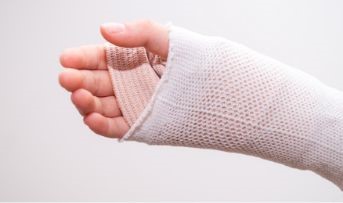
The effective tips to deal with motorbike wrist injury
Wrist damage is one of the most frequent types of injuries among motorcyclists. While some may be caused due to collisions, some are caused due to general riding activities such as using the throttle for a prolonged time or during long bike rides.
However, not all wrist injuries require similar treatment. Some may need substantial surgery and numerous treatments to correct the problem, while others recover independently with little to no therapy. If not given appropriate care immediately after a collision, even relatively minor injuries can cause lifelong disabilities and an adversely impacted lifestyle. If you have recently suffered a wrist injury, keep these tips in mind to help you recover faster!
Also, it would be wise to invest in the personal accident and bike insurance online to cover allied costs of damages done to you and your bike due to an accident.
Why you should seriously consider aftercare for your healing wrist:
Wrists are an integral part of our daily movements. While an injury is enough of a setback, neglecting aftercare worsens the situation. Repeated strain due to bending and bearing weight on them can cause further inflammation and have severe consequences like tendonitis or carpal tunnel syndrome.
However, using the following tips regularly can aid in improving flexibility and easing the pain.
1. Stretching:
Place your palm perpendicular to the forearm by bending the wrist or using the help of a wall to maintain the position. Push back your fingers and hold for 15–30 seconds. Do the same by folding the wrist downwards such that the back of the hand is against the wall and holding for 30 seconds.
2. Extended wrist:
Targeting the wrist, hold a weighted object in your palm. A small bottle or jar serves as the best prop for this stretch. With your fingers cupped around the thing, twist your wrist upwards and backward at a total angle of up to 160 degrees. Start slow, as your movement is bound to be restricted and strained. As you get comfortable, increase the weight and range of motion.
3. Bent finger stretches:
Much like the first stretch, this starts by holding out your fingers splayed out. Bend them at the joints for five seconds. Start with two sets of five repetitions slowly to ease the strain on the nerves.
4. Rotations:
While it may seem impossible immediately post-injury, ease your way into doing this stretch. You may do this with additional weight. Rotate your wrist by focusing on your hand until discomfort sets in.
5. Increasing grip power:
Hold and squeeze a grip gadget or a rubber ball for 5-10 seconds each time. It is a comprehensive movement that helps improve overall flexibility.
Depending on your doctor's advice, avoid riding if your wrist is severely impacted. However, if your doctor approves your riding plans, here are some extra tips that may reduce the strain on your wrist.
1. Practise good posture:
Poor positioning when riding a bike can cause wrist pain. Your nerves and joints may become stressed if your wrists are constantly locked. Make sure your elbows are slightly bent to ease some of this pressure if you need to lean forward while riding your bike.
2. Use attachments on your handlebar:
Add cushioned or gel grips to absorb movement and eliminate handlebar vibrations. Weighted bar ends can help reduce hand fatigue by stabilising vibrations and movement. Also, ensure that you grip the bar with reasonable force.
3. Lock your throttle input:
For simple cruise control, install a throttle lock. It helps maintain speed without adjusting the throttle, reducing the strain on the wrist.
Injuries are an inevitable risk in life. While you cannot avoid them, you can prevent them by exercising caution. Similarly, the mandatory purchase of bike insurance online prudently covers the motorcyclist from shouldering the financial burden of theft and damages to a bike.
Click HERE to buy bike insurance online.
Disclaimer: The information provided above is for illustrative purposes only. To get more details, please refer to policy wordings and prospectus before purchasing a policy.

Here are a few home remedies to deal with sprains
Sprains are one of the most common injuries people encounter by suddenly hurting their wrist, ankle or body while performing daily tasks. It is mainly caused due to stretch or tear of ligaments, and it takes up to two weeks to completely heal from the internal wound and pain. There are various ways to heal your injuries faster and soothe the sprain, some of which we will be discussing in this article.
However, it is crucial to note that while most of these remedies are home remedies, it is best to consult a doctor who can help you choose the proper medication and treatment if the situation worsens. Since the injuries that cause sprains can also cause a fracture, the doctor might suggest you take some tests.
Choosing the best personal accident policy in India is a step that you must take to ensure the best treatment for yourself. Your insurer will cover your medical expenses and hospital bills under this insurance.
Now let us look at some ways in which you can ensure faster recovery of sprains.
1. RICE technique:
Sprains heal the fastest when treated to the RICE technique. Let’s understand what RICE means.
R – REST – Resting the affected area is crucial for faster healing.
I – ICE – Ice pack reduces the blood flow to the affected area and helps in reducing pain or swelling. Apply an ice pack for 20 minutes. Give it a break for 5 minutes and put it back on.
C – COMPRESSION – This helps stabilise the injured area and helps subside the swelling. Wrap a bandage snugly around the wound. Avoid tightly bandaging the area as it might obstruct the blood flow.
E – ELEVATION – Elevation prevents fluid accumulation in the joint. Try to elevate the affected area using a pillow while resting.
2. Heat therapy:
While it is advised to use ice bags immediately after the injury, once the swelling subsides, a hot water bag periodically on the affected area can help soothe the pain and aid in the faster healing of the injury. The heat increases blood flow and relaxes any strained muscles. Another good idea would be to alternate between heating pads and cooling packs.
3. Salt baths:
After a few days of the injury, introduce the affected area to a salt bath. Salt baths are known for their soothing properties. It helps in soothing sore muscles and reduces stiffness significantly, making the affected area mobile and functioning effectively.
4. Protect the injured area:
As you start the healing process, it is crucial not to put much weight or pressure on the affected area. Exerting the area can lead to further tears in the ligament or fracture. In the case of ankle sprains, it is best to avoid any sporting activity or heavy exercise for about two weeks.
You may use crepe bandages to provide external support to your ankles. Remember not to pack them tightly as it will prevent circulation. Similarly, in the case of wrist sprains, avoid lifting weights and use a crepe bandage, as mentioned above.
These are a few ways to give your sprain the care and time it requires to heal. Most of these steps are the aftercare suggested by doctors. However, you must go for a follow-up checkup. This way, you can rest assured that your injury is completely healed, and you can carry on with your daily activities.
In most cases, insurance companies help you go cashless during the treatment. Nevertheless, remember to keep the bills and reports handy for your insurer to verify details. Always go for the best personal accident policy in India for hassle-free insurance claims.
Click HERE for the best personal accident policy in India.
Disclaimer: The information provided above is for illustrative purposes only. To get more details, please refer to policy wordings and prospectus before purchasing a policy.

What is constructive total loss in two-wheeler insurance
Whether you own a two-wheeler or a car, you should always ensure that you know everything about its maintenance and insurance. Getting insurance for your vehicle is of utmost importance. It protects your vehicle from severe damages by giving you compensation and solves third-party disputes.
However, just getting insurance for your vehicle is not enough. You also need to check out the various additional services offered by the insurance. This way, you can choose the most comprehensive insurance for your 2 wheeler. You must also inquire about all the essential terms relevant to your insurance. One such term is a constructive total loss. Although the term sounds complicated, it is not.
This article will help you to understand various aspects of a constructive total loss.
What is a constructive total loss?
You will likely file a claim for your 2 wheeler insurance only when your vehicle has suffered severe damages. Once you have filed a claim, the insurance company will inspect all the damages and reimburse the amount accordingly. Either you will get cashless compensation or money for the repairs. The damage is assessed well, and only compensation for the damages is provided.
If the vehicle is in dire need of minor repairs or servicing, the insurance company will reimburse that. It can also refund the amount for the replacement of bike parts. However, reimbursement only occurs after all the deductibles are assessed carefully. No matter the damage's severity, you will only get compensation up to the Insured Declared Value or IDV. You will not get any claim money that exceeds the IDV value.
There is also a major catch here. For instance, your two-wheeler undergoes irreversible damage. In such a case, the bike will be beyond repair. The insurance company can then declare it as a total loss. In other words, if the repair cost for the vehicle far exceeds its value, it results in total loss.
It is said that when the repair cost is more than 75% of the IDV, it is impossible to reimburse it. The constructive total loss takes place here.
Let's assume that your two-wheeler gets stolen. Then what will happen? In such a case, your insurance company will reimburse you for the IDV of your vehicle. The claim for theft of your bike will be treated as a total loss claim. The reimbursement amount will be sans the deductibles and depreciation.
How do you apply for a constructive total loss claim?
Now that you are familiar with constructive total loss let's look at the various steps to file a claim. They are:
● Go to the official website of your insurance company
● Look for the claims process tab or page
● You will see blanks to fill in your information
● Provide all the necessary information carefully
● After that is done, verify the self-inspection of your bike through the link sent to your mobile number
● A surveyor or inspector may be sent to get your vehicle inspected. Cooperate with them
● Once everything is done, you can submit all the required documents and forms
These easy steps can get you a total claim from the comfort of your home. You need to keep all these things in mind before you file a claim for your 2 wheeler insurance under constructive total loss. Once you give the correct information and abide by the guidelines, you can access the claim amount.
Click HERE to buy 2 wheeler insurance to protect your motorcycle from unexpected damages.
Disclaimer: The information provided above is for illustrative purposes only. To get more details, please refer to policy wordings and prospectus before purchasing a policy.

Let's discuss naturopathy and its effectiveness for a healthy life
While the allopathic world is trying its best, home remedies have also proven very effective, especially in our Indian culture. Naturopathy is the alternative medicinal route to building antibodies, curing health issues, and catalysing the body's healing capabilities and defence mechanisms.
But, how well do you know about naturopathy? Are you aware of the positive effects naturopathy has on the human body? What precautions must you take while going down this route of alternative remedies? Don't worry. This blog has all the answers to your queries and more! Let's discuss naturopathy and its effectiveness for a healthy life.
What is naturopathy?
Naturopathy is a healthcare practise that brings science and nature under one umbrella. It relies on fundamental principles and natural remedies like sunlight, water, exercise, diet, and stress management. Naturopathy enhances the body's ability to regain excellent health without using allopathic or over-the-counter medicines.
What are the pillars of naturopathy?
The five crucial elements of naturopathy include - air, water, fire, earth, and ether. Naturopathy practitioners ensure that they direct your body and mind toward holistic development through hydrotherapy, sunray therapy, mud therapy, air therapy, and vacuum therapy. Naturopathic physicians are state-licenced medical professionals recognised as primary care providers (PCPs).
Following are a few ways in which naturopathy helps heal our bodies.
• The healing power of nature:
The study of naturopathy believes that the human body has a self-healing ability. Naturopathy helps enhance the body's capability to fight and ward off any issues by following a healthy diet, nutrition, regular exercise, and herbal medicines.
• Treat in entirety:
Naturopathy practitioners approach the human body entirely. They believe that human's overall health is composed of more than just physical health. While developing their treatments, naturopaths consider all these factors and establish the medications on a holistic level. While western medicine focuses on suppressing or treating the symptom, naturopathy focuses on restoring the body's health and curing the illness from its core.
• Complete focus on zero harm:
Naturopathy always prioritises treatment methodologies that cause no damage to the body and are non-invasive. While physicians believe in "doing whatever it takes," naturopathy has shown a reluctance to use drugs and methods that can put the human body under external distress. It uses only natural remedies and elements like air, water, earth, and herbs to perform the treatment.
• Identifying the cause:
Symptoms are not only the focus area in naturopathy. Naturopathy practitioners prioritise identifying and removing the cause, not just eliminating the symptoms. The reason helps them diagnose the underlying problem, which allows them to curate their medications and suggest treatment methods.
• Prevention is always the first step:
Naturopathy focuses on developing the body's strength and immunity to keep all diseases at bay. Naturopaths prioritise assessing the risks and provide suggestions through healthy eating habits, a sound sleep cycle, and practising meditation.
Yes, it is effective.
Naturopaths work in close connection with their counterparts to exchange ideas, research, and treatments for the betterment of their patients. Naturopathy can also be related to alternatives like ayurveda, homoeopathy, acupuncture, etc.
Naturopathy is covered under insurance.
Yes, naturopathy is insured by health insurance under AYUSH treatments. All the medical expenses involved in the naturopathy treatment, including access to AYUSH hospitals or day-care centres and in-patient hospitalisation costs, are covered. Also, you may save a considerable amount on your sum insured as the cost of AYUSH treatments is lower than that of allopathy.
These were a few benefits of naturopathy for a healthy life. Since we talked about health and its significance in our daily lives, you must ensure that you stay on top of your health insurance game for yourself and your loved ones. Did you check when you are due for your health insurance policy renewal? If not, hurry! You must ensure that your health insurance stays intact and updated to live your life without worrying about unforeseeable situations.
Click HERE to learn more about health insurance policy renewal.
Disclaimer: The information provided above is for illustrative purposes only. To get more details, please refer to policy wordings and prospectus before purchasing a policy.

Let's understand the importance of airbags in car and passenger safety
Safety technology is one of the most critical aspects to consider when purchasing a vehicle. For first-time buyers who want to know the importance of a vehicle's safety technology, it is a collection of intelligent technologies and devices built in the car to prevent collisions and ensure the safety of the passengers and the vehicle. Airbags are a common type of protective device present in all cars today.
Maintaining and abiding by all safety measures is essential to keep others and yourself safe. However, investing in trustworthy online car insurance can add an additional layer of protection to your vehicle.
With the car companies upgrading to the latest safety technologies, we must also understand their importance, especially airbags.
What are airbags?
Airbags are a type of supplemental restraint device (SRDs) whose main aim is to protect the individuals in the front seat from any injuries in case of a collision. When the car crashes, an electronic mechanism is triggered, and these airbags inflate with gas quickly. They are designed to instantly cushion and protect the driver upon impact and deflate soon after deployment. When airbags were introduced in 1951, most cars had this flexible fabric bag installed only to protect the driver. Today, most car models have it inbuilt for both the front occupants, the driver and the passenger. In 2021, the Central Government of India made passenger airbags mandatory for all vehicles to improve safety norms in the country.
Some car models only have airbags installed for the driver and the front-seat passenger. However, there are a few advanced models that have them installed in a way to protect the passengers in the back seat. While it is only mandatory to have airbags for the front passengers, cars that provide airbags for both back and front are the best to ensure maximum safety.
How effective are airbags?
Airbags are a crucial mechanism in your vehicle, and one cannot ignore their significance in improving the level of safety of your car.
An airbag comprises a thin nylon fabric bag, a set of inflators, and a sensor. It is designed to signal the inflators to blow up the nylon bags on detecting a collision. This mechanism goes a long way in avoiding severe facial, chest and head injuries.
While this device cannot stop or prevent a dangerous event like a road accident or car crash like other advanced safety technologies, it can protect the occupants from injuries and fatalities. The passengers are not only saved from the harsh impact of a collision but also avoid hitting any hard or sharp objects inside the car that can cause severe damage.
Several reports have confirmed that the rate of fatalities caused by dangerous accidents or collisions has significantly dropped, thanks to the safety devices including airbags. They can be most effective when the passengers are buckled-up and sit firmly in their seats.
To sum it up, drivers and passengers must always follow specific safety measures like wearing a seat belt, driving at a steady pace, adjusting the rearview and side mirrors for a clear vision, and not being distracted while driving. In addition to it, having a secure online car insurance can further cover the damages caused due to road accidents. So, before you purchase a new car, consider all safety technologies including the airbags for crucial cushioning for people during a crash.
Find the best car insurance India for your vehicle HERE .
Disclaimer: The information provided above is for illustrative purposes only. To get more details, please refer to policy wordings and prospectus before purchasing a policy.

Learn how you can deep clean your car's trunk
As the owner and user of your vehicle, you need to understand the importance of cleaning your car regularly to save money and ensure that your vehicle is safe and hygienic for other passengers.
The vehicle's trunk can become the dirtiest place due to the stuff we put there. It could be the dust from the roller bags and carry-ons, stains from the fruits and vegetables, baby items, liquids, and more. So, it is essential to deep clean the trunk of your car to keep the atmosphere in the vehicle healthy and avoid any smells, decaying, and dust that could be harmful to the health of the people sitting inside.
This blog will teach you how to deep clean your car’s trunk. Without any further delay, let us get started!
1. Identify the suitable materials:
For deep cleaning, you need to identify the suitable materials you must use to ensure that it does not cause any adverse effects like bad odour, staining the carpet or the rag in the trunk, damaging the surface inside the trunk, etc. Removing the stains and cleaning the trunk is essential, but the right kinds of detergents, liquids, and cleaning cloth helps you make the process easier and show effective results.
2. Remove the lint:
You often store your furry coats, jackets, sweaters, trench coats, etc., in the trunk. Such clothes generally leave particular woollen shreds called lint on the surface of the trunk, which should be removed properly. If not, they tend to stick to interiors and lose their colour when they come in contact with chemicals in cleaning liquids, soaps, or detergents causing irremovable stains.
3. Vacuuming efficiently:
Deep cleaning involves cleaning the surfaces, the trunk, and the carpet-rolled interiors. However, do not stop just at the cleaning but also vacuum the trunk to get rid of those tiny pieces of paper, leaves from the vegetable stems, or fruit peels. Clean everything that is not easily visible to the naked eye while cleaning. The trunk of your car can be a complex surface to maintain if you do not deep clean regularly and follow the complete routine and methods.
4. Cleaning the carpet:
While the surfaces are supposed to be clean, do not just leave the carpet and vacuum it regularly. Occasionally, remove the carpet from the trunk and wash it well by shampooing and conditioning it. You need to dry it completely before putting it back in the trunk. Even a slightly wet carpet can cause damage by giving rise to bacteria, thus making it unhealthy and unhygienic for you and the people in your car.
Adding to this list, remember to clean the lid of your trunk. A dirty top of the trunk of your car might make your entire effort of deep cleaning your car’s trunk go to waste due to the dirt and dust sitting on it.
We hope you found this blog valuable and effective in maintaining cleanliness and pleasing odour inside your car. Moreover, it is always a good idea to get car insurance and protect your vehicle from any damages which might be caused during unfortunate circumstances. Explore your options and purchase the best car insurance India that optimally caters to your needs.
Click HERE to learn more about car insurance India.
Disclaimer: The information provided above is for illustrative purposes only. To get more details, please refer to policy wordings and prospectus before purchasing a policy.

Make these essentials a part of your summer travel checklist
Summers are here, and by now, you've probably made plans to detach from the routine life and plan an exotic vacation for the perfect summer. Overworking may lead to fatigue, stress, and significant health hazards. Taking a break is highly demanded by your body to unwind all the stress and rejuvenate to get back to work with a new positivity.
Whether you're flying across the nation or going on a road trip for a few days, there are a few travel essentials you should pick up before leaving your home. In today’s topic, we bring a helpful checklist of travel essentials that are a must to carry while planning a holiday this summer.
1. Sunscreen:
The scorching heat of summers invites tanning and burns that adversely affect the body. You should apply sunscreen before heading outside in the harsh sun. A sunscreen with an SPF35 or plus will block out around 95% of Ultraviolet radiation, which causes sunburns and raises the risk of skin cancer.
2. Hat and Sunglasses:
A hat will provide some relief from the heat by avoiding the direct contact of your head with the sunrays. Although a hat will provide some shade, it's also crucial to protect your eyes and ensure you carry your sunglasses.
3. Backpack:
One of the most pleasing aspects of an active holiday is the possibility of discovery. Invest in a good backpack to enjoy it. It should be light and with a waistband to relieve back pressure. We advise that you choose a rainproof rucksack with many safe and secure compartments.
4. Water bottle:
Hydration is crucial, especially in summers. We recommend getting a bottle with water level marking on it so that you can keep track of the amount of water you consume in a day. Regular sipping of water will help you stay active and keep your body engaged.
5. Comfortable clothes:
Most summer vacations are spent at the beach or poolside. Carry your swimwear and comfortable beachwear.
6. Footwear:
Flip flops are ideal in summers. Along with your flip flops, also carry a pair of hiking shoes. They will help you when you set out on a hike.
7. Quick-drying towel:
It's helpful to have a quick-drying towel to avoid soaking other things in your suitcase on the way home.
8. Dry-wet bag:
Separating wet and dry stuff is useful when on a summer vacation at the beachside. A bag with two separate compartments will do the job for you.
9. First aid kit:
There is always a risk of scrapes, bruises, bug bites, and even an upset stomach. It's usually a good idea to keep a modest first aid kit with the essentials. This contains bug repellent, bandages, essential medicines, antiseptics, pain relievers etc.
10. General Insurance:
General Insurance should always be on your checklist no matter where you go. It will protect your travel, and you can enjoy the vacation with complete peace of mind. Invest in the best general insurance India and be rest assured of a safe and memorable trip.
The best part about any vacation is to forget the worries of everyday life and be in the moment at your favourite beach or mountain resort. Summer is probably the best time for family vacations, and with the restrictions getting eased out, the opportunities for planning trips will increase.
Also, don’t forget to carry your masks and hand sanitizers wherever you go because the pandemic has not ended yet. Take all the necessary precautions and make the above essentials a part of your travel checklist to set off on an exciting, adventurous summer holiday.
Visit HERE to explore plans of general insurance India.
Disclaimer: The information provided above is for illustrative purposes only. To get more details, please refer to policy wordings and prospectus before purchasing a policy.

What you need to know before getting your booster shot
India faced the third wave of the COVID-19 pandemic in January 2022. During these two years of resilience, we have controlled the spread of the virus with effective public health protocols. National and state lockdowns, social distancing, and mandatory face masks have contained the infection rate. Last year, introducing the various COVID-19 vaccines tremendously helped build strong immunity against the deadly virus.
Vaccination against the COVID-19 virus has proved to be an essential tool in helping effectively manage the pandemic. Fully vaccinated people are relatively well-protected against a severe coronavirus infection, complications, and mortality. However, even effective vaccines become less viable over time. Intensive research suggests that vaccinations lose some of their power over time. It has been found that eventually receiving another vaccine shot after a few months can help highly boost the vaccine's effectiveness. This additional shot is called the booster shot.
Receiving both vaccine doses is the first and foremost integral step to building a strong enough immunity to control the infection rate. While the vaccines are deemed safe and effective, and everyone has been advised to get the jab at the earliest, several members of the Indian population have still not been vaccinated. Before considering the booster shot, the goal is to vaccinate the country's entire population to build herd immunity.
Here is some information to know before getting your booster shot:
1. The booster doses have been rolled out from Jan 10th, 2022. They will initially be administered to the front-line workers and adults aged 60 and above with comorbidities.
2. The booster is given 9 months or 39 weeks after administering the second dose of COVID Vaccine as per the guidelines.
3. The vaccine's side effects are reportedly similar to the previous doses, including fever, body and muscle pains, headache, pain, or swelling at the injection site.
4. Unlike other countries, Indians are advised to get the booster from the company as their previous vaccine doses and not mix any other. Citizens who have taken two shots of Covishield must take the Covishield booster shot only, and those who have taken Covaxin should go for the Covaxin booster shot. Do not take the alternate vaccine as it might create a complication.
5. The first two doses of the COVID-19 vaccine boost our body's immune system. With these shots, memory cells that remember the virus are produced to help in case of an infection. The number of these cells increases with the second dose and helps fight the infection.
When these memory cells are challenged with a booster, they induce a robust immune response. As a result, the booster shot produces more antibodies that have an increased potency to fight the virus.
While taking the vaccines is integral to stay safe from the virus, one must remain vigilant and follow the safety protocol. Vaccination alone is not enough to fight the pandemic and the constantly emerging variants. In these challenging times, prioritising health is paramount. Remember to renew health insurance online or simply contact your insurance company to ensure your safe future.
Apart from maintaining your health insurance, you must indulge in healthy activities like yoga and vigorously consume a nourishing diet to combat any health ailment or infection.
Click HERE to renew health insurance online.
Disclaimer: The information provided above is for illustrative purposes only. To get more details, please refer to policy wordings and prospectus before purchasing a policy.

What does the budget 2023 have for the insurance sector
The Government of India presented the union budget on 1st February 2023. It has provided incentives for the people to move from the old tax regime consisting of deductions and rebates to the new tax regime. This, in turn, will affect the insurance sector as well.
While there were a few surprises here and there, it has proposed a significant change by taxing maturity proceeds of insurance policies commanding an aggregate premium of over Rs.5 lakhs in a financial year. Such high premiums usually occur in the case of money-back insurance plans that require one-time premium payments or endowment plans.
Here are some of the key recommendations that would impact life insurance sector.
1. No change in Section 80C and 80D:
Insurance premium amounts paid for insuring the life of self, spouse, or child are presently eligible for deduction under Section 80C of the Income Tax Act up to Rs.1.5 lakhs per annum. This is irrespective of whether our child is minor or major, dependent or independent. Also, individuals, as well as Hindu Undivided Family (HUF), are both eligible for claiming this deduction.
Similarly, Section 80D allows a person to claim a deduction for health insurance premiums and expenses incurred towards preventive health check-ups for self, spouse, children, and even parents up to Rs.65000/- per annum, subject to certain conditions.
The budget of 2023 could have been better for the insurance sector of the limits under Sections 80C and 80D. The industry expected a raise in the limits under these sections to boost consumer savings and investment. However, these limits have been left untouched in the budget of 2023.
2. The choice between the old-tax regime and the new-tax regime:
Till now, there was an option to choose between the old-tax regime that allows for several deductions and rebates and the new tax regime that taxes your income at a flat rate. You could choose either of the two and enjoy the above deductions under Sections 80C and 80D by choosing the old-tax regime.
There has been a shift in policy in this regard in the budget of 2023. The new tax regime is the default setting for individuals, under which you cannot enjoy these rebates. If you still want to enjoy deductions under Sections 80C and 80D, you will have to choose the old-tax regime specifically.
3. Aggregate premium clause:
According to the budget of 2023, if the aggregate premium paid by an individual is over Rs.5 lakhs in a financial year starting 1st April 2023, he will have to pay tax on their maturity proceeds. However, if such a policyholder dies, the nominee's maturity proceeds will be tax-free.
Maturity proceeds or income from insurance policies having an aggregate premium of less than Rs.5 lakhs in a financial year will be exempted from taxation. However, the introduction of this clause may discourage consumers such as High-Net-worth individuals (HNIs) from buying big-ticket insurance products to save taxes. As a result, the revenues or top-line of the insurance companies are bound to suffer and go down.
The Insurance industry plays a vital role in the overall financial growth of the country, and as such, the sector is undoubtedly not very encouraged with the budget for 2023. There was a general expectation of an extension of the Rs.1.5 lakhs deductions allowed under Sections 80C and 80D, which still needs to be met. Moreover, taxing the maturity proceeds of policies commanding an aggregate premium of Rs.5 lakhs or more in a financial year will further dampen the sales of high-value insurance policies.
However, insurance buyers need not be worried as the prevalent deduction limit is still the same and has not gone down. Also, a very small percentage of Indians buy high-value insurance policies, and the changed clause is unlikely to affect most Indian residents. Online general insurance policies continue to offer the same ease, protection, and security, and individuals can continue to enjoy its benefits.
Click HERE to buy online general insurance plan to safeguard your valuable assets.
Disclaimer: The information provided above is for illustrative purposes only. To get more details, please refer to policy wordings and prospectus before purchasing a policy.
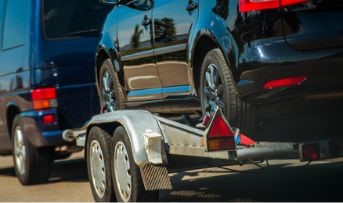
Importing a car to India? Here is a list of things to consider
Indian celebrities, cricket players, and business tycoons have all made headlines for driving fancy foreign cars that they brought into India. It takes time and is complicated to import a foreign car into India. But if someone is willing to put in the time and money, they can import their dream car by following the rules and going through the process.
In this article, we'll go through the steps involved in bringing a foreign car into India and some crucial rules you must abide by.
India has stricter regulations than other nations regarding the import of foreign cars. Foreign cars will be permitted to drive on Indian roads only if they meet all requirements.
Guidelines for importing a new car.
To import a new car, the following prerequisites must be satisfied:
● The car must be built or assembled outside of India.
● The car must be brand new in every way, and you can only import it from the nation where it was made. It cannot have been registered, leased, sold, or loaned before being imported into India.
● A right-hand driver's car is required.
● Kilometres, not miles, should be displayed on the speedometer.
● You can use only the naval docks in Mumbai, Chennai, and Kolkata to import cars. Therefore, you should use just one of these ports to transport the car to India.
Rules for importing a used car.
The procedures for importing a used car into India are complex and may take longer than expected. The rules are as follows:
● Imported used cars shouldn't have a manufacturing date older than three years.
● It must be a right-hand drive car.
● Kilometres, not miles, should be displayed on the speedometer.
● Again, only naval docks in Mumbai, Chennai, and Kolkata are allowed to transport the car to India.
● The car should be financed, leased, registered, or sold.
● It must have a roadworthiness certificate with a minimum 5-year validity.
Who is authorised to bring commercial cars into India?
You must meet additional requirements before you can import commercial cars into India. Because people can travel in passenger cars, SUVs, and jeeps that were imported, the rules for commercial cars are strict. The following are the profiles that can bring such cars into the country:
1. An NRI who last lived in India at least two years before the import and owned a car for at least a year.
2. Relatives, i.e., the legitimate heirs or successors of a person who passed away overseas and left a car in their care.
3. Individuals with physical disabilities.
4. Companies with foreign equity participation that are already operating in India.
5. International corporations with a presence in India.
6. Trusts that are legally established for religious, missionary, or charitable purposes in India and abide by the regulations established by the state or central government.
7. Any honorary consuls that the Indian government's Ministry of External Affairs recommends.
8. Any journalist who possesses an accreditation certificate issued by the Bureau of the Indian government's Ministry of Information and Broadcasting.
Things to take into account before bringing a car into India.
Before you start the time-consuming process of bringing a car into India, you need to think about a few essential things.
1. Import taxes on cars:
You might be required to pay an import duty of up to 116% of the car's CIF (cost, insurance, and freight) value.
2. Registration:
The closest RTO in India must register the car. The import tariff does not include the fees for registration and road tax. These fees vary based on the kind and price of the car.
Insurance is essential to drive your car in India legally. You can conveniently buy car insurance online to financially protect you from paying for damages caused by an accident or third-party liabilities. Your car insurance can offer financial security against collision, fire, or other unavoidable natural or man-made disasters.
Click HERE to buy car insurance online.
Disclaimer: The information provided above is for illustrative purposes only. To get more details, please refer to policy wordings and prospectus before purchasing a policy.
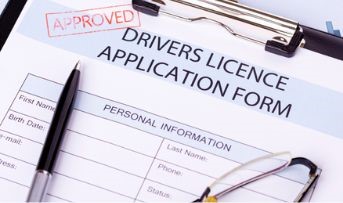
How to raise a 2 wheeler insurance claim without an RC or licence
The Driving Licence (DL) and Registration Certificate (RC) are two crucial documents for any vehicle in the country. Without this, your vehicle is not registered under the law. It also means that you are not eligible to be a legal driver of your concerned vehicle.
When filing an insurance claim, you need to produce these two documents before your insurance company. They are crucial in determining your ownership details. However, many circumstances result in the loss of these documents. What will you do then? Will you lose the 2 wheeler insurance claim?
If you're looking for the answers to the questions above, this article is definitely for you.
What is an add-on for 2 wheeler insurance?
Many unforeseen circumstances can cause the theft, loss, or damage of your driver's licence and registration certificate. Although this nullifies your vehicle ownership under the law, certain factors can help you.
In situations like these, the Registration Certificate add-on or Loss of Licence comes to your rescue. It is an additional cover for your 2 wheeler insurance. Under this, you need to pay a higher interest rate or premium. The add-on ensures that you experience additional benefits as the owner of your vehicle and insurance.
You can easily buy the add-on when applying for your 2 wheeler insurance. It can be done both online and offline without any hassles. This add-on is extremely helpful in situations when you lose your Driving License or Registration Certificate. It ensures that you still get your insurance claim.
Benefits of add-on:
● It enables you to apply for an insurance claim without a driver's licence or RC
● You are entitled to receive monetary support in case your driving licence and registration certificate are lost or stolen
● It will serve as a helper when the claim is settled
● The add-on comes with a very partial increase in the insurance premium
What to do when DL or RC is lost or stolen?
If your Driver's Licence or Registration Certificate is stolen or lost, you need to do the following things immediately:
● Go to the police station and file a complaint about the theft
● Make sure to get a copy of the FIR with you
● Go to the nearest RTO office and file for a duplicate copy of your DL or RC. Attach the photocopy of the FIR along with the required documents
● Pay the given fees
● For a DL, you need to complete the biometric process as well
● The documents will be safely delivered to your address
What to do while filling an insurance claim without a DL or RC?
If you're filing an insurance claim for your 2 wheeler insurance, then you should:
● Make sure that you apply for the claim within the specified time
● Fill out the form with the correct information. Check it twice
● Gather all the required document
● Initiate the claim
● You should provide all the proofs if you have lost your DL and Registration Certificate. If you have an add-on, this process is all the easier
● Before applying for the claim, read all the terms and conditions carefully
These are the simple yet effective things you should remember while filling a 2 wheeler insurance claim if you misplace your licence and RC. However, always ensure that you keep all your important documents in the right place and prevent them from being lost or stolen. This can cause you great distress otherwise.
Click HERE to buy the best 2 wheeler insurance.
Disclaimer: The information provided above is for illustrative purposes only. To get more details, please refer to policy wordings and prospectus before purchasing a policy.

Explore these five popular street food tours in India
Several factors need to be considered while finalising your holiday destination. You need to think about the budget, hotels, amenities, safety, etc. But one of the essential elements which determine your vacation destination is food.
Street food has a huge fandom. People of all ages love the culture of street food and local cuisine. You not only get varieties of food, but street food is quite pocket-friendly and on-the-go. If you are a food enthusiast, then different street food tours in our country will give you an unforgettable gastronomic experience.
In this blog, we will be discussing five popular street food tours in India.
1. Street food crawl in Varanasi:
A food tasting tour of Varanasi's old town helps you explore the food culture, which still hints at the ancient palette of the city's long history. A part of this walking, street food tour is visiting the oldest shop in Kashi and seeing how the most famous delicacies are prepared and tasting them after a quick demonstration.
2. Food and Heritage walk in Old Delhi:
While New Delhi has seen fast-paced growth and development and is still advancing with time, Old Delhi holds the culture together and keeps it alive. It brings the generations together with heritage and food.
Mixing heritage walk with food in Old Delhi immerse you in the places from cultural depths and taste the local cuisines that carry the original flavours from the legacies of the Mughal Dynasty. Old Delhi is a tasty retreat especially for non-veg lovers to enjoy a few unique and mouth-watering delicacies at every stall.
3. The food lanes of Kolkata:
A food tour in Kolkata begins with a bit of street vendors and leads to exploring one spot followed by another. During your time in Kolkata, you will get to taste jumbo prawns in coconut milk curry, onion bhajis, a range of chicken curries, and different varieties of authentic Bengali sweets like rasgulla and cham-cham that will melt your heart.
The tour has the perfect ending- coffee at one of the oldest colonial coffee houses in Kolkata. You can explore many Bengali delicacies and drinks during your exploration of Kolkata food streets.
4. Explore Jaipur food trail:
A food tour of Jaipur offers you the experience of the culture of Jaipur through its food palette. In just a few hours during your trip around Hawa Mahal, you can taste the famous and authentic delicacies of Jaipur. You will get the opportunity to explore the traditional and historical places, eat Rajasthani dishes and shop in the street markets.
5. Eat where locals go in Old Mumbai:
This food adventure in Mumbai gets you to explore three different districts that offer distinct delicacies like curries with crispy papads, Chowpatty's chaat, snacks, kebabs, hand-churned ice creams, and much more. All this food paired with stories about the vibrant Old Bombay will make your visit a memorable one.
After the delicious discussion about these popular street food tours in India, you also need to understand the importance of your safety during the trip. These tours will take you through crowded streets and congested spaces. It would be wise to explore different insurance plans of the best general insurance company to ensure the safety of you and your belongings while travelling.
Click HERE to know more about the general insurance company and the plans that you can invest into.
Disclaimer: The information provided above is for illustrative purposes only. To get more details, please refer to policy wordings and prospectus before purchasing a policy.

How to maintain a clean riding record, and how does it impact your two wheeler insurance
For every two-wheeler owner, it is imperative to know various driving and traffic rules and regulations that prevail in the country. One of the most important rules of riding a two-wheeler here is the mandate of having 2 wheeler insurance. However, just having two-wheeler insurance is not enough. You also need to maintain a clean riding record. Your insurance will not be affected when you have a clean riding record.
This article is for you if you are unaware of a clean riding record and how it impacts your insurance.
What is a clean riding record?
A clean riding record, in simple words, looks at all aspects of your two-wheeler. It considers how you drive, the accidents you've encountered, broken rules or any challans you received, and so on.
It provides the whole history of your two-wheeler. The official statement includes all the details of your vehicle and directly affects your 2 wheeler insurance as well. When your insurance premium is calculated, the accidents, traffic violations, and challans are considered part of your riding record.
How does it affect your two wheeler insurance?
Many factors are taken into account while calculating your 2 wheeler insurance. These are:
● History of claim
● Model of vehicle
● Location of your vehicle
● Riding record
● Type of Plan
● Year of two-wheeler manufacturing
Riders with a clean record will likely be blessed with the best insurance plans and discounted premiums. This may not be the case for others.
Factors affecting riding record.
1. Late payment of challans:
This directly shows your laid-back attitude and procrastination. It is advised not to violate traffic rules and get a challan. If you do, you should try to pay the fees for the same on time.
2. Accidents:
This is the most dangerous thing to affect your riding record. Your negligence or carelessness during driving can cause accidents and reflect badly on your profile.
3. Violation of traffic rules:
If you violate any traffic rules, it will reflect significantly on your riding record. It can involve over-speeding, overtaking, jumping traffic signals, etc. It is recommended to follow all traffic rules to eliminate the risks of accidents.
4. Intoxication:
If you've been caught riding your two-wheeler while drunk or under the influence of other intoxicants, your riding record can be tainted forever. It is advisable to avoid drinking and driving to remain safe on the roads.
How to maintain a good riding record?
You must maintain a clean riding record to claim your 2 wheeler insurance without any hassles. The steps are
1. Ride safely:
You must be responsible on the road and avoid riding recklessly. You should be respectful of everyone on the road and keep them safe.
2. Follow traffic rules:
It is advisable to follow all the traffic rules and regulations without fail. You should not over-speed or jump traffic lights. Avoid parking your vehicle in no-parking zones.
3. Pay penalties:
If you break any traffic rule by mistake and receive a challan in your name, immediately pay the fees. Do not wait till the last day.
Being safe on the road and maintaining a clean driving record is always advisable to avoid any mess up with your insurance claims. Make a smart move, follow the aforementioned steps, and reward yourself with a clean riding record and the seamless benefits of 2 wheeler insurance.
Click HERE to buy comprehensive 2 wheeler insurance.
Disclaimer: The information provided above is for illustrative purposes only. To get more details, please refer to policy wordings and prospectus before purchasing a policy.

Here are a few car gearbox problems and the ways to resolve them
Having a car helps you manage your personal and professional lives with convenience and independence. While the whole process of purchasing a vehicle can be pretty extensive, it is equally important to take care of your vehicle to maintain its efficiency. Hence, it would be best to get it serviced regularly. Ensure that all the damages are repaired and replaced according to need.
But how do you ensure that your car stays up and running? There are several parts that require regular inspection. One of them is the gearbox. How can you detect and rectify problems with your gearbox? What happens if you don't get them checked by an expert?
This blog will discuss significant pointers about problems and the ways to resolve them.
1. Unexpected noise:
If you feel that your car is shaking, moving roughly, jerking or making grinding noises while operating, this indicates some underlying problem. And if you notice these noises when you shift the gear, it is an issue with the gearbox.
2. Laggy acceleration:
If you notice a slight delay (more than a second) in your vehicle's acceleration while you shift gears, this could suggest a problem with the gearbox. It could also be due to a faulty clutch part that finds it challenging to engage and disengage completely. Get this issue examined by an expert car mechanic to ensure proper repair and maintenance of the gearbox before the situation worsens.
3. Gear slipping:
The gearbox heavily depends on your actions and how you operate it unless it is automatic. Gear slipping is a phenomenon in which the car jerks and the gear shifts back when you accelerate. There are possibilities that it might change into neutral at times. And jumping to neutral gear while in motion can be risky and invite accidents as your car will halt suddenly.
4. Spilling of fuel:
The gearbox of your car is a crucial mechanical component. Since it moves in a rotational pattern, it needs fuel for lubrication. It is likely a transmission fluid leak if you detect bright orange-coloured liquid drops under your car. Get it fixed to avoid the gear from drying out.
5. Smell:
Overheating of the transmission fluid can cause improper gear shifts and a burning smell. Transmission fluid is essential in reducing the heat and cooling down the gearbox components.
Now that we have listed specific gearbox problems to look out for, the next question is how to resolve them. You can monitor the transmission fluid periodically, keep a check on the gears, make sure that the cooling system works efficiently, get your car serviced at regular intervals, drive with care and watch out for the signs we discussed above.
Another way to ensure that your car stays in good shape is to get it insured against unprecedented damages. You can safeguard your vehicle by purchasing the best car insurance in India and be relieved from the monetary stress involved in car maintenance and repair.
Click HERE to know more about how you can buy the best car insurance in India.
Disclaimer: The information provided above is for illustrative purposes only. To get more details, please refer to policy wordings and prospectus before purchasing a policy.

Here’s the guide to enjoying a perfect group trip
Group trips are often a sort of once-in-a-lifetime opportunity for everyone. However, it is tough to set an itinerary that is convenient for all and pleases each one in the group. Differences may arise when choosing the mode of travel. Some may want to take a flight, some train, while others want a road trip. Further differences may arise with the choice of hotels, destinations covered, trip duration, etc. What to do now? Fret not!
We are here with our exclusive guide to enjoying a perfect group trip.
1. A group leader:
The first step for the success of any group trip is to appoint a group leader. He should be bold, knowledgeable, a good researcher, and a planner. He should also be a good team player as he will have to manage and deal with everyone in the group.
The appointment of a group leader will ensure a single point of contact for addressing the needs of all. He can finalise the travel dates, mode of travel, hotels, etc., after discussion with everyone in the group on a one-to-one basis.
2. Budget:
A group trip is about convenience for one and all. Some may want an international holiday, while others want to go within the country. Some may favour travelling by air and staying in a five-star hotel, while others may want to make it more budget-friendly, travel by train, and stay in less expensive hotels.
The group members should first decide on their budget and book accordingly. The trip should not put undue pressure on anyone financially and cause inconvenience.
3. Book in time:
A group trip involves a lot of bookings, be it for travel, accommodation, or sightseeing. Always make your bookings as soon as possible otherwise you will have to pay steep prices for your flight and hotel booking. There is also a chance that tickets or rooms become booked and unavailable for your travel dates. A delay in bookings can spoil your entire travel plan.
4. Plan beforehand:
A perfect group trip means planning possibly everything before you arrive at your destination. Local sightseeing and related bookings should be planned to avoid confusion and delays later. For example, you may consider booking cable cars in advance if you visit such a destination in a large group. Buying cable car tickets on the spot can take a lot of time. Also, there is a chance that there are no vacant seats left for you at the last moment.
You should also plan your meals well in advance. Everyone has a different food choice, and meeting their expectations can be daunting. Find good restaurants for meals, declare the menu/ available choices in advance and book them accordingly.
5. Do not make your trip hectic:
A perfect group trip will give everyone some personal space and time. Never make your travel itinerary very hectic and time-bound. Keep a comfortable gap between various activities so that people are not left exhausted at the end of the day.
You can also plan to keep an extra day in hand so that individuals can use their holiday time as they wish and do the activities of their choice. Remember that you are on holiday, not on a mission, to finish some tasks.
No trip can be as enjoyable as a group trip with family or friends. But it has to be planned well in advance and executed effectively. Similarly, you need to plan for your general insurance needs well in advance so that it provides adequate security coverage in times of emergencies. As there are several general insurance companies in India, always thoroughly research their policies and coverage and opt for the best one.
Click HERE to buy insurance from the reliable general insurance plan to make your group travel safe from mishaps.
Disclaimer: The information provided above is for illustrative purposes only. To get more details, please refer to policy wordings and prospectus before purchasing a policy.
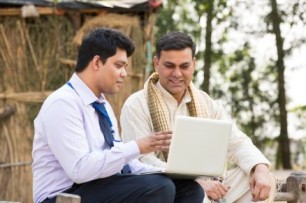
Five reasons every salesperson needs a personal accident insurance
A salesperson is always on the go, meeting new people and constantly travelling from place to place. They are an integral part of any company. The company's reach to the broader masses depends on a salesperson's ability to promote the products and services of the company and make people aware of all the benefits of indulging in it.
But having said that, a salesperson is susceptible to situations during work that an otherwise office employee wouldn't face. Therefore, this article will shed light on why salespersons need personal accident insurance in India and how it will safeguard the company and the individual from any expenses that might occur in the future.
1. Claiming any disability:
A salesperson's job translates to tight deadlines and busy schedules, and sometimes to meet the deadlines, they need to rush, which can lead to dangerous accidents during work or otherwise. Hence having personal accident insurance in India can assure the safety of a salesperson in many ways. Any disability caused during the accident can be claimed, and the person will be compensated appropriately.
Sometimes an accident might lead to a permanent loss of income. Under such situations, the insurance provider mitigates the financial losses caused.
2. Hospital expenses:
With medical bills skyrocketing, not having insurance is not an option. Starting from ambulance charges to the medical expenses, including but not limited to medicines, tests and scans are covered under this policy. The insurance provider compensates for all the policyholder's medications during and after the treatment. This takes the pressure off the shoulders of the insured.
3. Environment modification:
In case of an accident, certain changes will need to be made at home and work. People who use wheelchairs or other kinds of support will need to make modifications to their house and vehicle. Setting up a ramp, modifying the bathroom, making the car wheelchair friendly are just a few modifications that one will need. Insurance providers will be able to provide compensation for these modifications as well.
4. Transportation cost:
Finding the best treatment in the closest hospital is not always possible. In such a case, the insurance provider will reimburse all expenses incurred by a family member for the commute between the hospital and home. The transportation cost for the ambulance is also covered under this policy.
5. Accidental death:
Upon the death of the policy bearer, the insurance provider pays the entire sum of insurance to the nominee. Additionally, an educational grant is provided for the education of two dependent kids up to the age of 23. The insurance provider also covers the funeral cost and the transport of the mortal remains.
These are a few reasons why salespeople should invest in personal accident insurance in India. Many people believe that health insurance and accident insurance are the same. However, accident insurance solely caters to losses or expenses due to an accident. Therefore, one must get accident insurance to safeguard their future.
Click HERE to find out about personal insurance India.
Disclaimer: The information provided above is for illustrative purposes only. To get more details, please refer to policy wordings and prospectus before purchasing a policy.
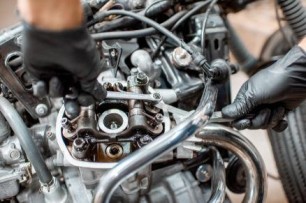
Here are a few tips to change your bike's engine oil
No experience in life can compare to the adrenaline rush of riding a motorcycle. However, it is crucial to note the importance of maintaining your two-wheeler. Regularly changing the engine oil in your bike's motor is a vital part of keeping it functioning and operating smoothly. Without frequent oil changes, it overheats, the friction between its internal components increases, and overall performance suffers. As a bike owner, you must ensure that your bike's oil is changed regularly.
Yet another way to keep your bike safe is to cover it against any unexpected incident, such as damage, robbery, loss, or natural calamities, with the help of ideal 2 wheeler insurance.
Here are some important steps to change a bike's engine oil.
1. Start your engine:
It's a lot simpler to replace your oil while your engine is warm, so make sure you run it for at least 30 minutes before starting to change the oil. Remember, do not start a motorcycle and leave it idle. You will face the risk of causing damage to your bike.
2. Removal of old oil:
The next step is to dispose of the leftover oil by gently emptying it into a drain pan. The pipes from which the motorcycle oil is to be unloaded are positioned differently on various models, so be sure about the correct pipe before you begin.
Bend the motorcycle at a 45-degree angle and maintain it there for a few minutes. With a wrench, release the drain bolt and allow the oil to drain. Don't stop until you are confident there is no more oil left inside.
3. Install a new oil filter:
Be cautious while removing the old oil filter since there may be some spills. Before changing it, apply a little fresh oil to the new filter. This will guarantee that it runs smoothly into the engine and is readily withdrawn during the new oil filter replacement. Screw-in the fresh oil filter by hand, and be careful not to over tighten it.
4. Fill in the fresh motor oil:
Using the repair instructions manual that comes with your bike, measure out the exact quantity of oil required in a beaker. Remove the engine oil valve nut and insert a funnel to help the oil flow. Then, add the carefully measured oil to the engine.
Start the engine without revving it and let the fresh oil flow. With the completion of this step, you have successfully finished the procedure of changing the engine oil of your bike.
5. Finishing adjustments:
There are still some things remaining after the procedure. Ensure that there are no leaks and double-check all the bolts to assure they are snug. Wipe off any residual oil from the bike's surface using a cloth.
Bike owners have a close affection for their two-wheelers. As a result, they are not hesitant to get their hands dirty if it means keeping their bike in top condition. While an oil change ensures more remarkable performance, it does not protect from external causes or physical damages. Hence, responsible bike owners must invest in 2 wheeler insurance for the assured safety of their bike and good financial coverage if they incur loss due to accident or theft.
Click HERE to buy two-wheeler insurance.
Disclaimer: The information provided above is for illustrative purposes only. To get more details, please refer to policy wordings and prospectus before purchasing a policy.

Here are a few tips for installing an audio system in your car
We all love good music, especially while driving around or travelling long distances. The music system has become an essential factor associated with the purchase of cars. Vehicles today come with fancy sound systems, and their features differ with the price range and models.
The sound system has evolved massively over time. The type of speakers, the sound they produce, and different settings are now being provided in all kinds of cars. The modern intelligent and hands-free voice-enabled audio systems have raised car owners' bar.
In this blog, we will discuss the audio setup for your vehicle and a few tips for installing an audio system.
1. Stereo:
You need to figure out the stereo you are looking for. List all your expectations from the one you want to install. It could include multiple features like touchscreen, playback (video), navigation, etc. You can purchase a stereo (aftermarket) and get it installed by an expert technician to ensure that the wires are not altered, and the warranty doesn’t void.
2. Speaker:
Your current speakers might lack treble bass and dull the vocals. You can resolve this issue by getting a new speaker according to your needs. There are component speakers with two-way or three-way components.
The two-way speakers produce mid-low bass and vocals frequencies, while the three-way component speakers have an additional speaker for middle-range frequencies. You can also pick the full-range speakers, mainly known as the co-axial speakers, for an immersive audio experience.
3. Amplifier:
To achieve loudness from your speakers, you can add an amplifier to your audio system. It comes in various configurations and power outputs. Some of these configurations are 4/3/2 channels which consist of four-channel amplifiers: these amplifiers power one subwoofer or one subwoofer and two speakers or four speakers. You need to get a component subwoofer if you like loud, thumping bass or sub-bass in the songs.
4. Subwoofer:
The customisable option amongst subwoofers is the component subwoofer. It has a wide range of power ratings and sizes options. Bass tube and bass box subwoofers are preinstalled in tube type and bass box type enclosures. You can directly use them to plug and play.
Another option in this category is the under-seat subwoofer. They focus on bass and space utility as they can be easily installed under your seats, thus freeing up the boot space of your vehicle.
You can use some damping sheets on the doors, windows, floors of your car to lessen the background noise from the roads and reduce the vibration from the doors due to loud volumes. This would amplify the impact of the music.
That’s a wrap on the tips to install an audio system in your car. Adding to this, it would be wise if you refrain from listening to loud music while driving. It may distract you, and an unstable focus on the road can lead to severe mishaps. Along with installing an audio system, consider getting your car insured to safeguard it against damages and stay stress-free monetarily. Invest in suitable private car insurance India and ensure the longevity of your vehicle.
Click HERE to know more about buying private car insurance India.
Disclaimer: The information provided above is for illustrative purposes only. To get more details, please refer to policy wordings and prospectus before purchasing a policy.

Five ways to help your child choose the right career
As a parent, the responsibility to help your child choose the right career can be challenging. In the past, Indian society has noticed parents putting their children under tremendous pressure by comparing them to other children.
Nevertheless, parents have become aware of the importance of helping their children pick the right career. When your child passes out from high school, the next step is to decide which career will be best for them. We have got you covered!
In this blog, we will discuss five ways to help your child choose the right career for them.
1. Always treat your child as an individual rather than forcing your choices on them:
Even though your child came through you, they may not hold the same likes and dislikes as you. Unfortunately, many parents do not understand their child's likes and dislikes and want them to pursue careers that they couldn't when they were young.
However, doing so can affect your child's mental health and mislead them in the wrong direction. Instead, try to understand their views without belittling them. Their dreams and aspirations should be your priority.
2. Help them find their interests:
Some children may have a firm decision about the career they want, while others may be confused. Encourage your child to find what interests them. You can list down all the things they like and dislike. You may also motivate them to analyse their strengths and passions.
3. Get professional help for your child:
Sometimes, picking the right career can become challenging due to a lack of understanding between the child and parent. Therefore, provide professional help to your child by connecting them to counsellors who can conduct their aptitude test and guide them about which field interests them and what career prospects can be the best for them.
4. Help them explore all the options:
As a parent, you will be aware of your child's hobbies, dislikes, and likes. For example, if your child is already excelling in painting, you may encourage them to explore their options. Help your child explore all the possible career options that let them enjoy their passion. Remember not to go too far, as it can be overwhelming for them. Figure out the right time to discuss it with your child and slowly approach the conversation.
5. Be encouraging and patient during the process:
Choosing the right profession does not happen overnight. Humans evolve with time. Remind your child that it is alright to take their time to explore their interests.
If your child wants a break for their self-discovery journey, do not demotivate them. Instead, encourage them to keep exploring their options and pick the ones they like.
When helping your child pick the right career option for them, you need to have a lot of patience and strength. This process and such a wide array of options can be overwhelming and frustrating for your child, which can cause them to become anxious. However, you can support your child by encouraging them to take their time to figure out their options.
Help your child pick the right career without putting them under pressure or treating them as an extension of you. A secure future is also essential for your child. Invest in general insurance and shield your child's aspirations and health, all under one comprehensive cover. Look for online general insurance to get multiple options and benefits.
Click HERE to get online general insurance for your child to ensure their well-being and safety.
Disclaimer: The information provided above is for illustrative purposes only. To get more details, please refer to policy wordings and prospectus before purchasing a policy.

How early immunisation can help your infant have a healthy life
For more than five decades now, immunisation has saved billions of lives. It's a low-cost, high-impact strategy to safeguard your child's health against various diseases and infections. Immunisation builds the groundwork for a healthy future.
Vaccines are critical in protecting the most vulnerable, such as children and infants. However, one out of every five children in the world is still unvaccinated. Having the highest number of unvaccinated children, India has strengthened its efforts to enhance mass vaccine coverage with mission Indradanush 2.0.
Over the last few decades, healthcare has become increasingly expensive. A health insurance policy can come in handy during costly treatments and hospitalisations. So, look for online health insurance companies to buy a policy to secure your child's future and cover them under seamless benefits. To find out more about immunisation, continue reading this article.
What is immunisation?
Immunisation is the process that protects people against illness caused by microorganism infection (formally called pathogens) by increasing the immunity of the body to combat these infections. A vaccine is a biological substance used for immunisation.
How does immunisation work?
When immunised against a disease, your body treats it as a natural infection. A vaccine contains a microorganism that is introduced into the body in a dead or weakened form. However, your immune system has no way of knowing whether the virus is alive or dead, so it takes it as a red alert and treats it as a threat. As a result, the immune system produces antibodies to attack the virus and eliminate it from the body.
As a result, if you acquire a similar virus in the future, your immunity will be prepared to combat that virus and shield your body against its infection. According to a World Health Organization report, immunisation saves an estimated 2-3 million lives each year (majorly children) by protecting against diphtheria, pneumonia, pertussis (whooping cough), rotavirus, diarrhoea, rubella tetanus, smallpox, polio, mumps, and measles.
Immunisation has eradicated many terrible diseases that massacred people in clusters and tons. Despite this, an estimated 19.5 million infants have not received all immunisations. The need to adequately communicate the health advantages of vaccination and the risks of not immunising children cannot be overstated.
Importance of early immunisation:
Most health experts, researchers, and professional medical organisations strongly recommend immunisation. Vaccines are the most effective steps to prevent infectious diseases.
Vaccine-preventable diseases are known to induce childhood stunting, leading to poor growth, poor adult health, and lower learning ability in children. But, getting your infant vaccinated at the right time can prevent them from having to experience such situations.
Vaccinations are an essential factor in determining your children's health. Shots for children are only effective if they are given on time and according to schedule. They aid in developing children's immune systems, allowing them to grow up healthy and happy. The development of cognitive abilities is also observed after vaccination.
Alongside vaccination, it is essential to buy comprehensive health insurance for your child to secure their health and life further. You may look for online health insurance companies and browse through different plans, compare their premium, and then choose the one that fits all your requirements.
Click HERE to know more about health insurance.
Disclaimer: The information provided above is for illustrative purposes only. To get more details, please refer to policy wordings and prospectus before purchasing a policy.


